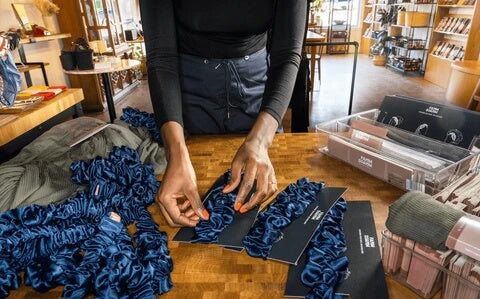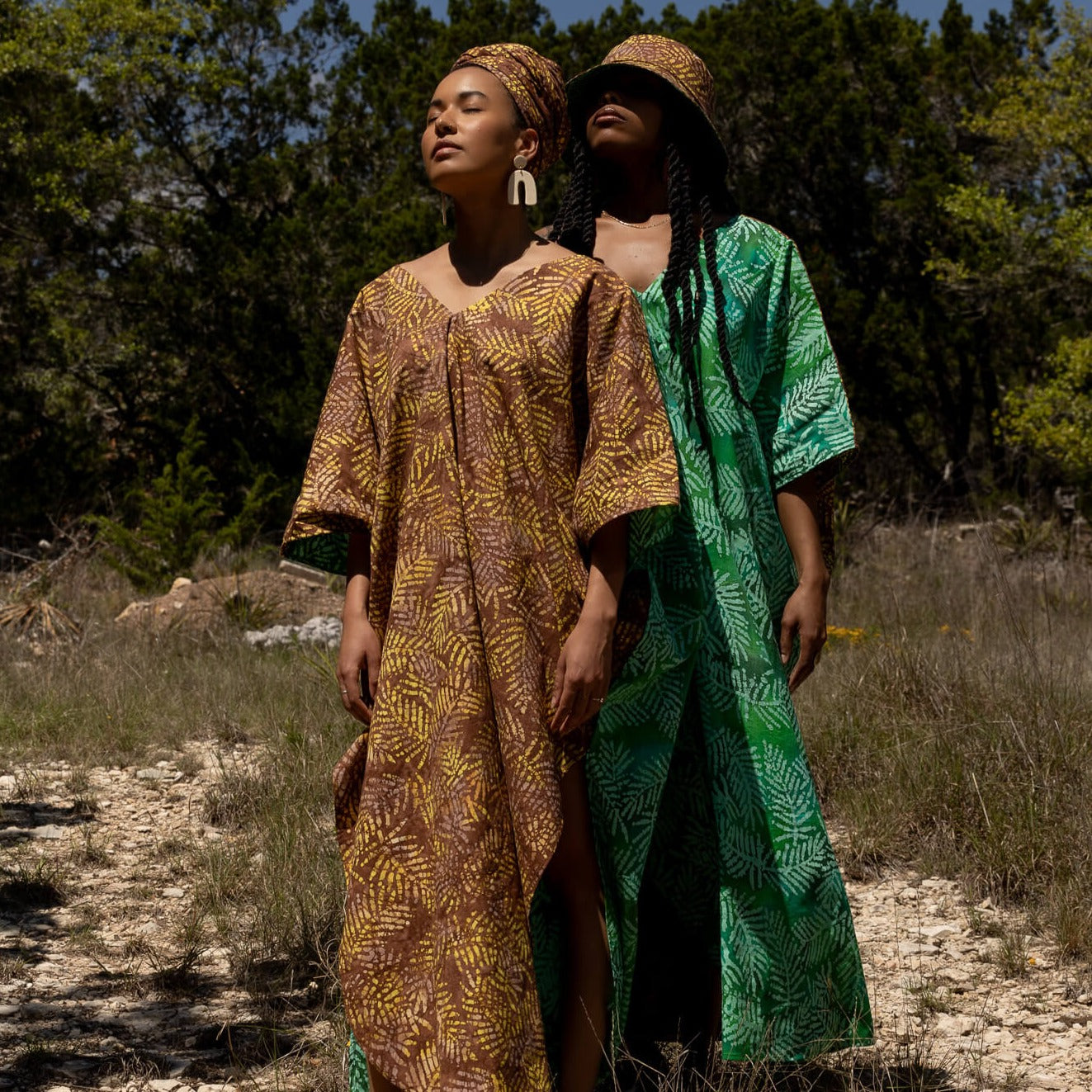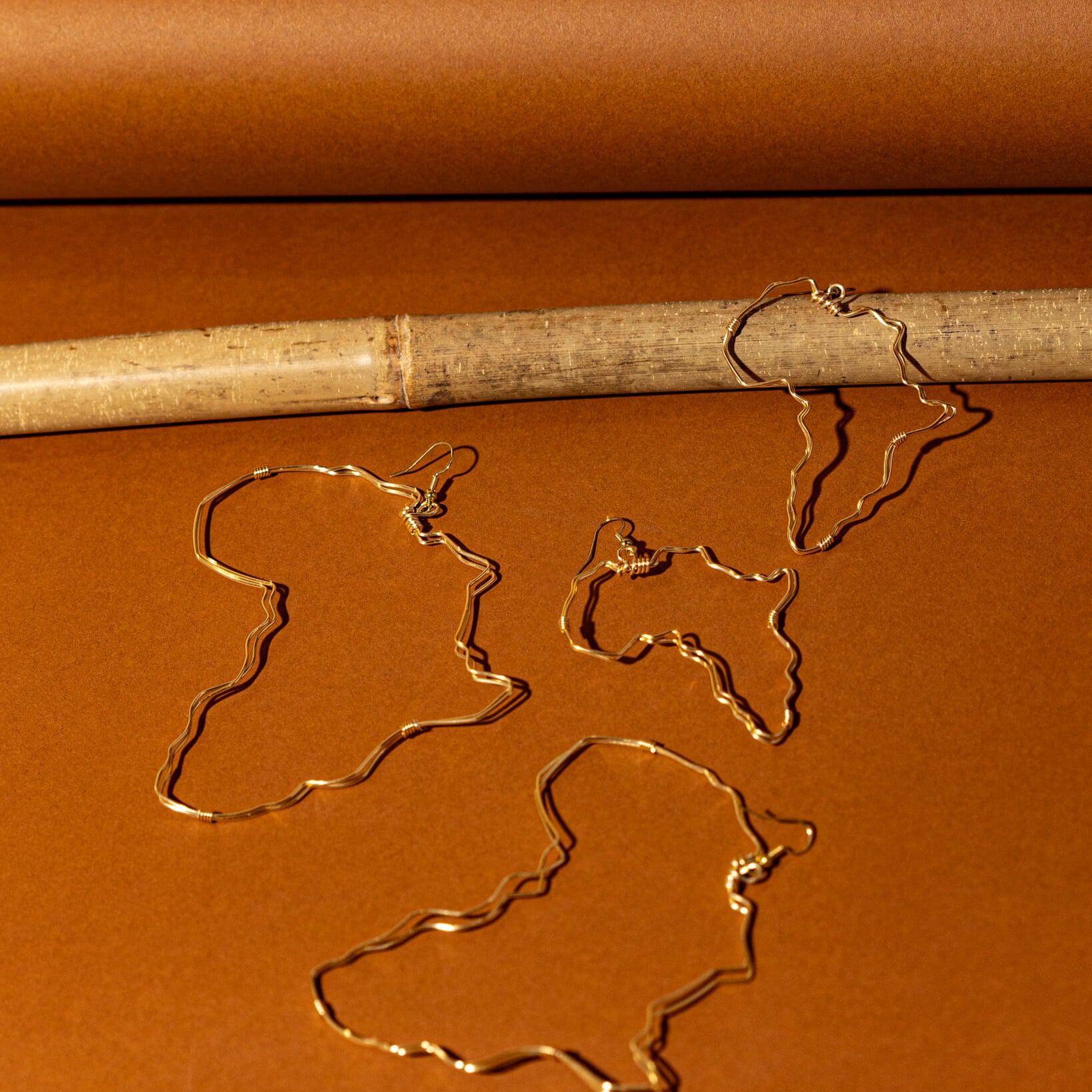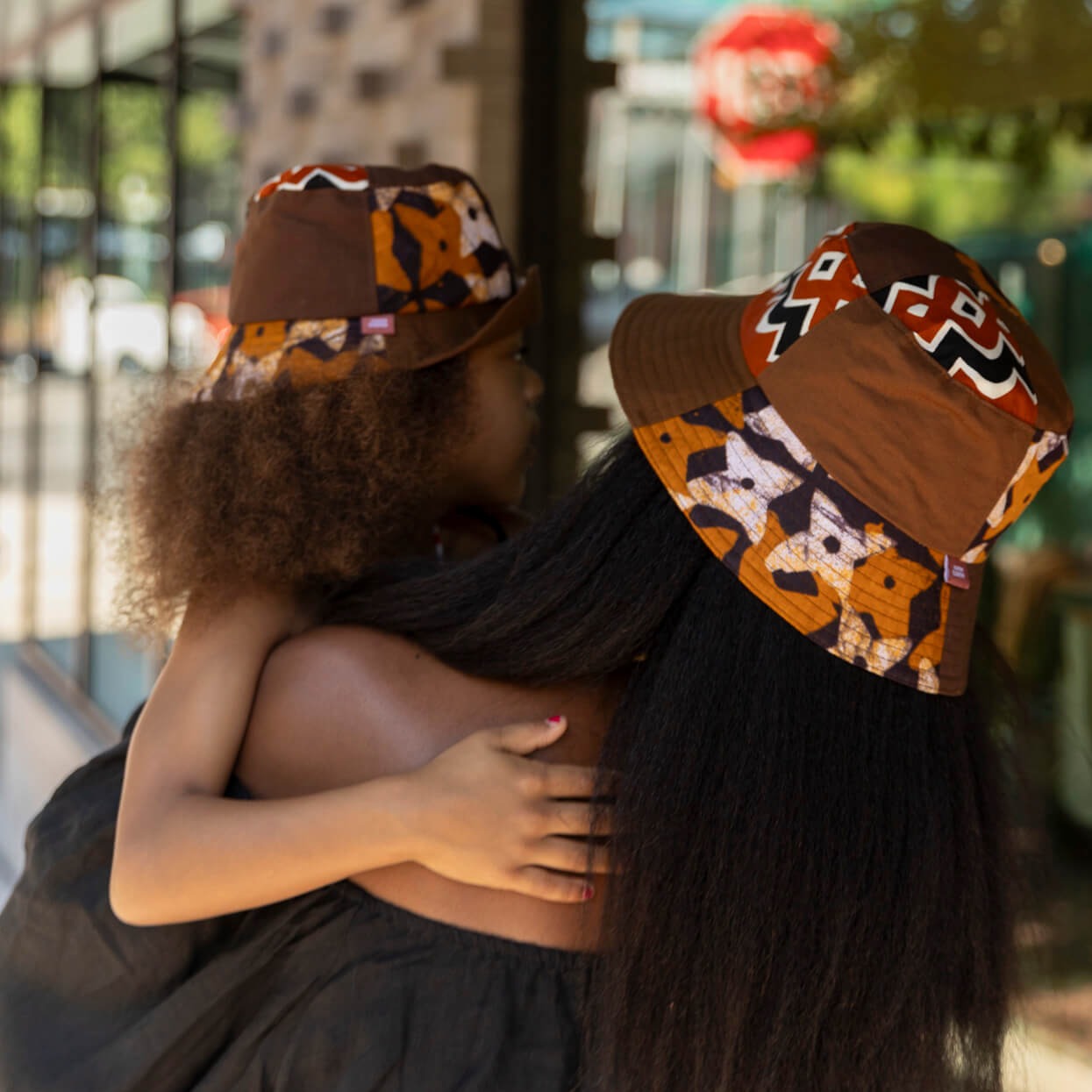Paola sat down with Doyin Oyeniyi in Fanm Djanm's store front and studio to open up about the brand's inspiration, origin, and future trajectory. This snippet, laden with pictures by Jeff Wilson, provides a detailed insight into into what Mathé considers fashionable, referencing black women in the markets of Haiti and "African Auntie chic" as the epitome of style and expression.
Doyin's account begins below.
----
When Haitian-born Paola Mathé was working at hotels and restaurants in New York in her twenties, she would often attract attention for wrapping her hair in colorful fabrics, as typically done by older Black women. Inspired to make head wraps more accessible to a younger crowd, she launched Fanm Djanm (Haitian Creole for “strong woman”) in 2014 with a collection of eight styles. Since moving her line to Austin, in 2020, Mathé has expanded it to include dozens of locally made head wraps, bucket hats, and caftans, which she sells online as well as at her appointment-only storefront and studio on South Lamar Boulevard. Her goal is to broaden the perception of what’s considered fashionable. “You always hear things like ‘Parisian chic,’ ” she says, “but I don’t think anything is more chic than an African auntie.”

Paola in portrait wearing La Grotte headwrap.
Texas Monthly: What led you to create Fanm Djanm?
Paola Mathé: I was wearing head wraps a lot in Harlem. All the aunties were wearing head wraps, but not a lot of twenty-two- or twenty-three-year-olds were wearing them. I used to get a lot of attention. Some of it was positive; some of it was people making fun of me. But I never was offended by those comments, because I’ve always loved that look. This woman stopped me on the street and said, “Hey sis, where’d you get your head wrap?” And at that time, my hair was wrapped in like a yard of fabric that I found—maybe less than a yard, it was just a scrap. I said, “Well, go to this African shop and just buy some fabric.” She said “Okay” and then walked away because I wasn’t being helpful. And that was the main thing that had me thinking, “What if I actually started something where I could sell head wraps to women, where they didn’t feel like they had to go dig [for fabric]?”

A table in the shop displaying a Star Anise satin-lined bucket hat, Amma bandana, Ewe carry all pouch, with hanging Goiaba, Havana, Tango, and Mayflower ruched headbands.
TM: How did you make those first head wraps?
PM: I went to a few tailors based in Harlem, and I told them my idea. I said, “I want to make head wraps. Can you help me make forty with this fabric?” And they said, “Why?” I’m not joking—a few of them just flat out ignored me. I finally found this one guy in a booth. I am so grateful for our first customers. I would say the first one or so head wraps I sold all had a line right down the middle because I just didn’t know. I was just passionate. But the tailors weren’t listening to me when I was telling them, “I need this to be straight; I need this to be neat.” They were like, “You’re just going to get what you’re gonna get.” So that’s how it happened. Someone listened to me, and then another person listened to me. And then we worked something out until I outgrew them. And then we started producing things in-house. And now we’ve moved [Fanm Djanm] here [to Austin], and we’re working with people with their own workshops who’ve worked with some of these big factories and who have been in the industry for decades.

Paola prepares a Bayou crown ruched headband for display alongside Bamboo headwraps.
TM: What’s your process for figuring out which fabrics you want for which products with the local tailors you work with now?
PM: We meet with them weekly. Honestly, it’s a gut feeling. If I see a print and I think it’s going to sell out immediately, I’m going to get as much of it as possible. Honestly, a lot of Fanm Djanm is very selfish. I buy things that I really love. But so often the main product is the head wrap, but let’s say we couldn’t use ten yards of this [fabric] because it was damaged, because the ink bled or there were holes in there or whatever. Then we’re like, “Let’s make bandannas with them and see how that goes.”
Read the article in its entirety here.























Leave a comment